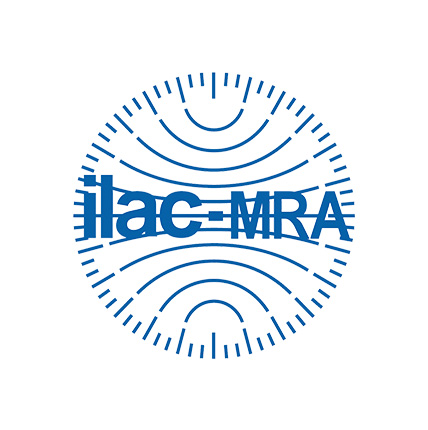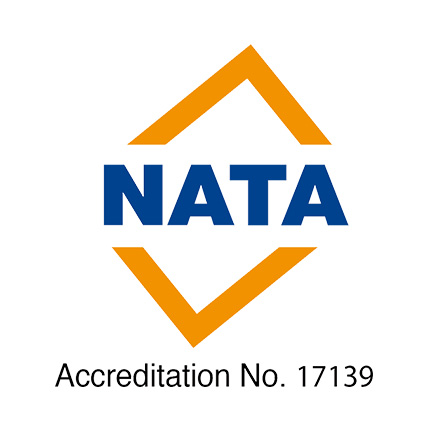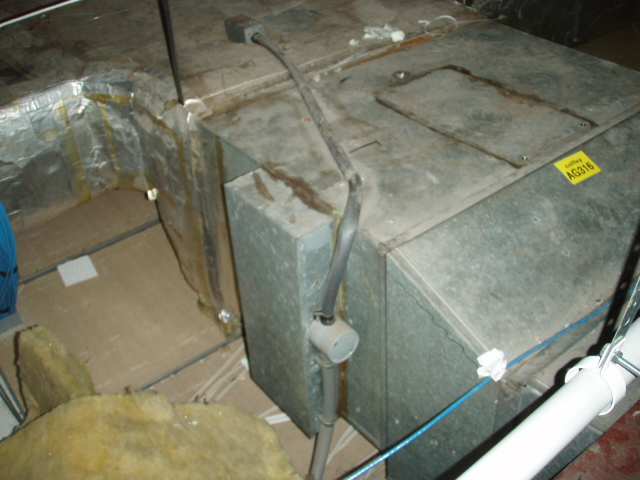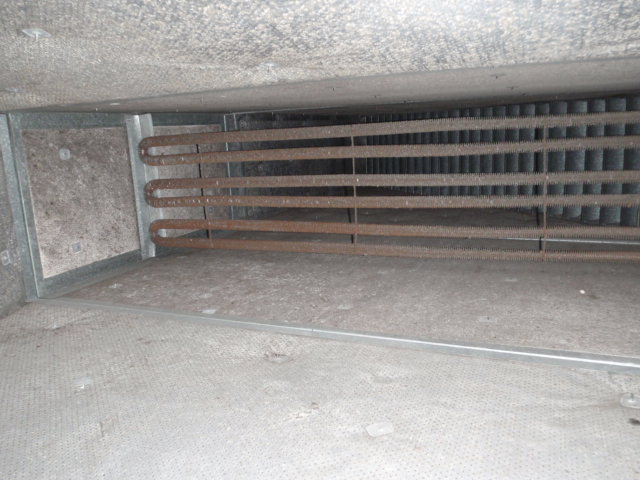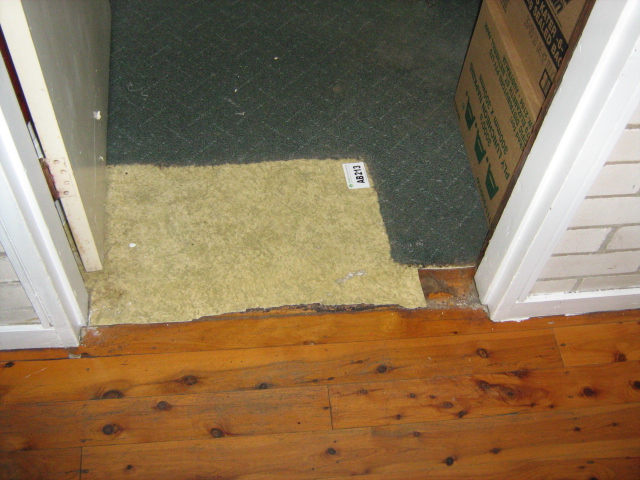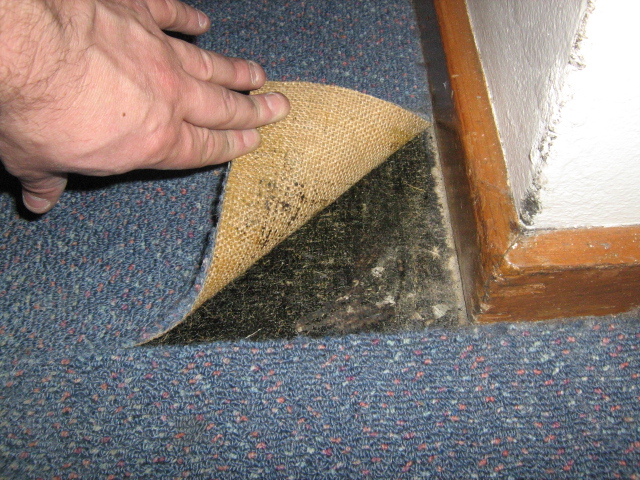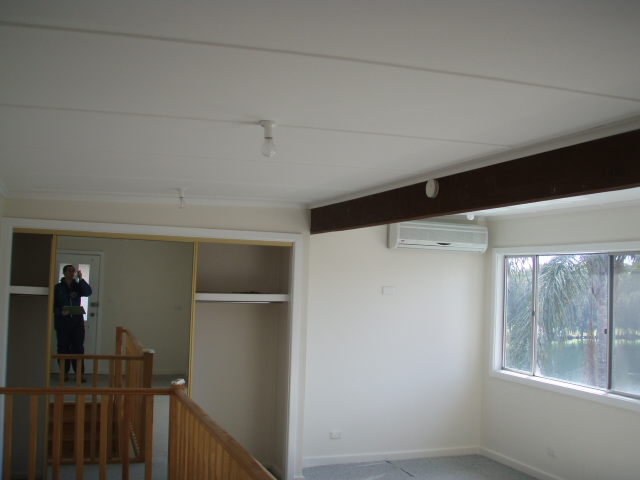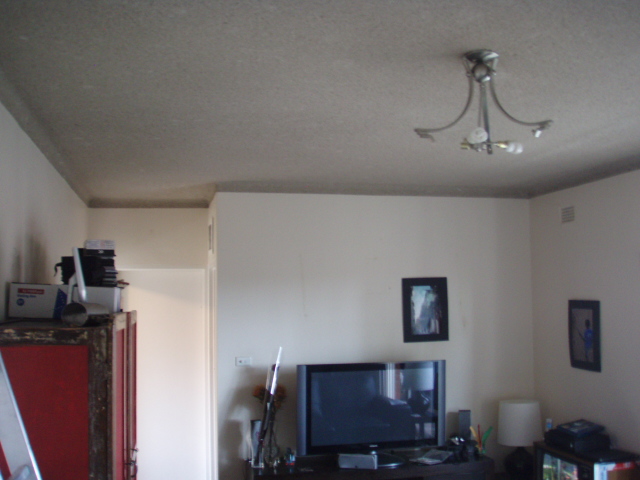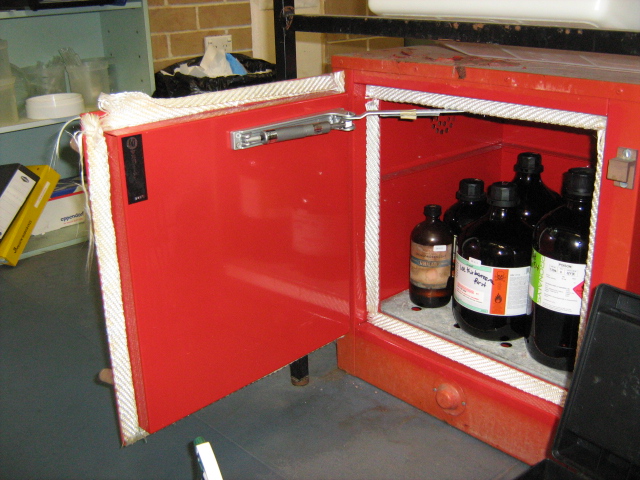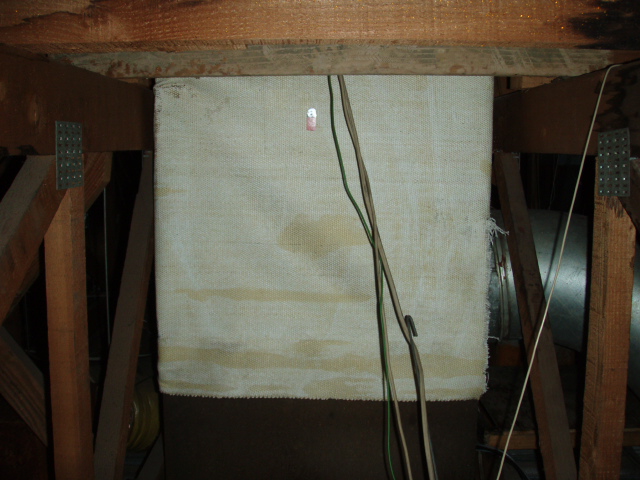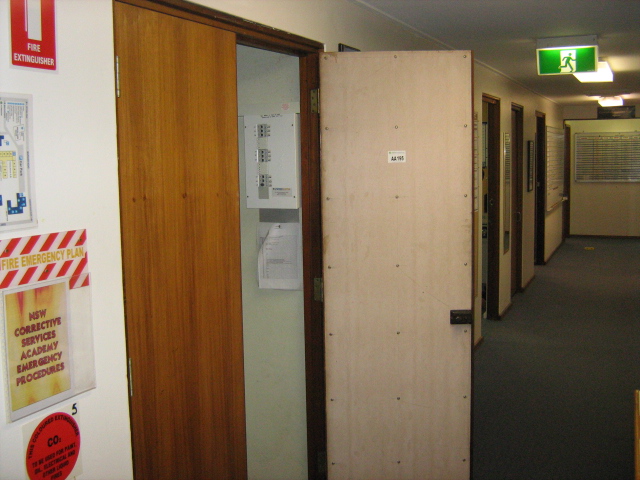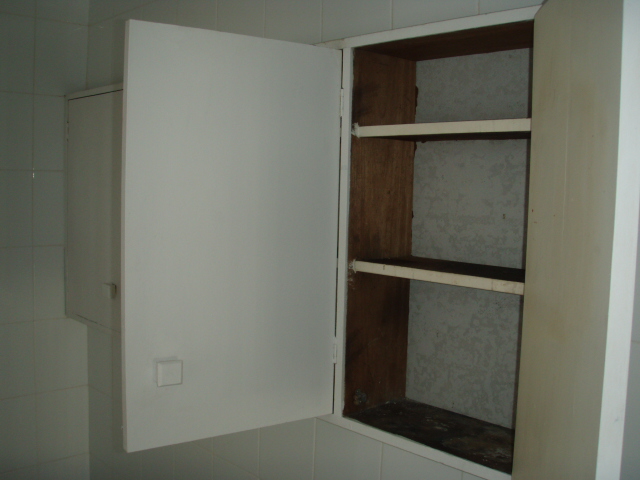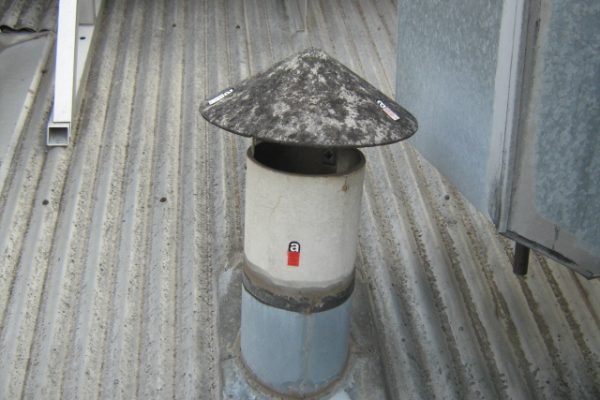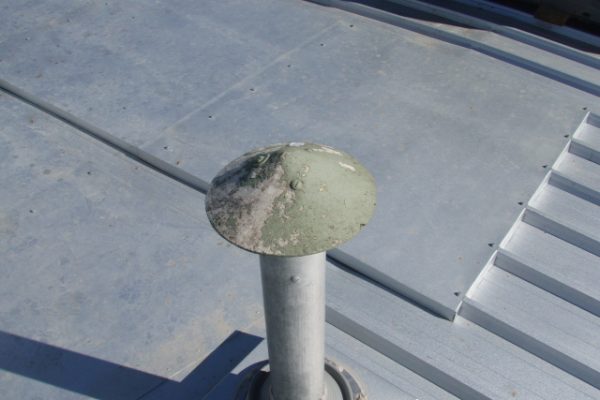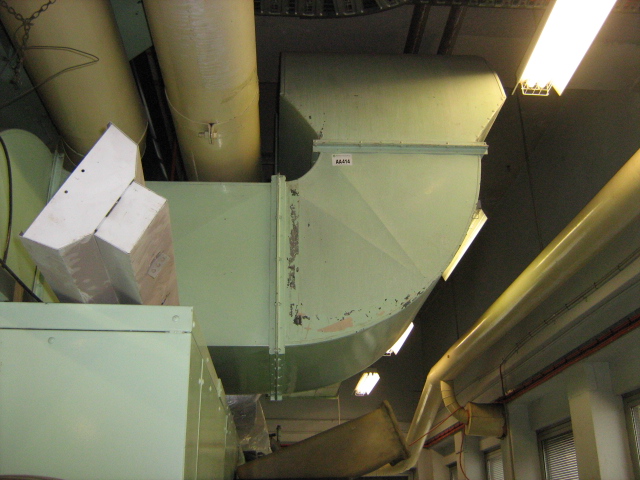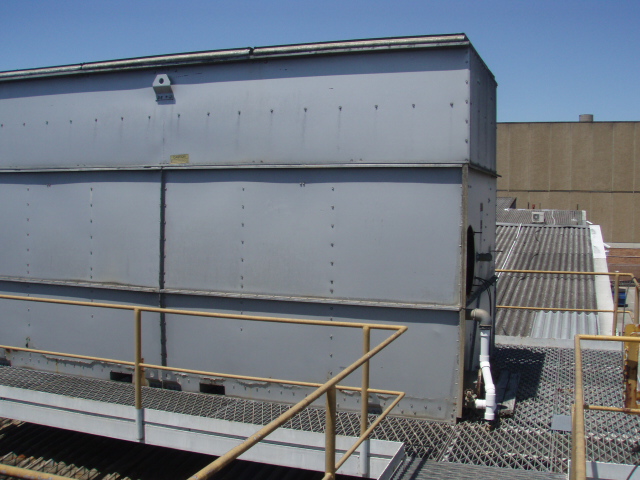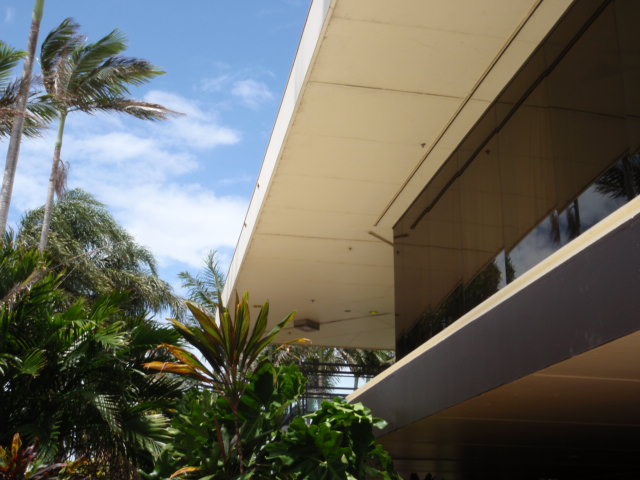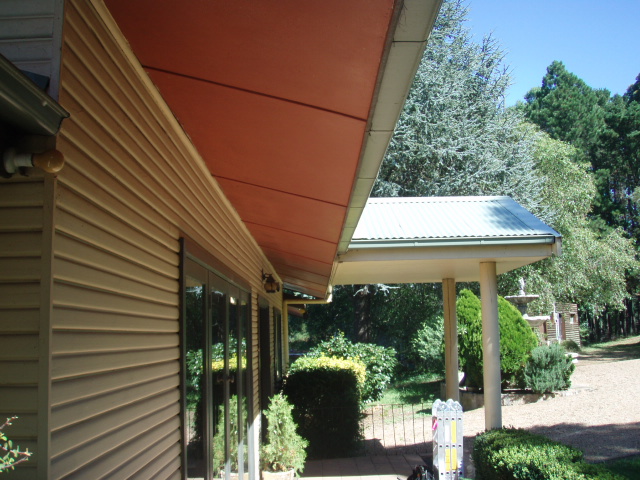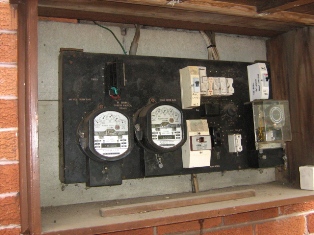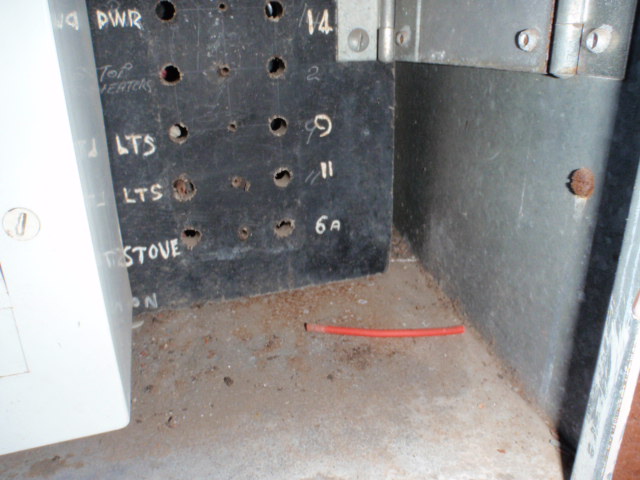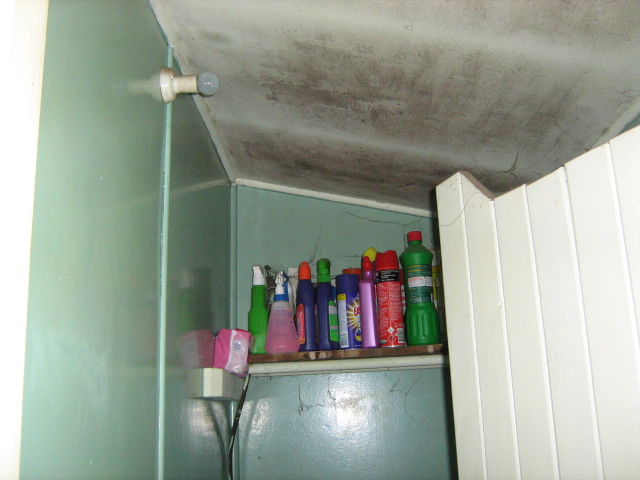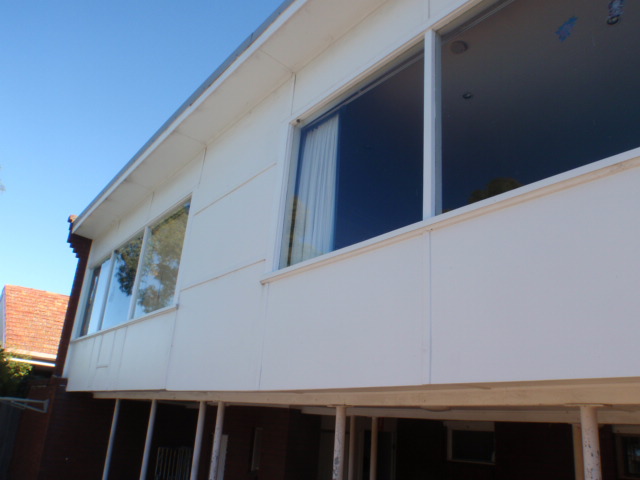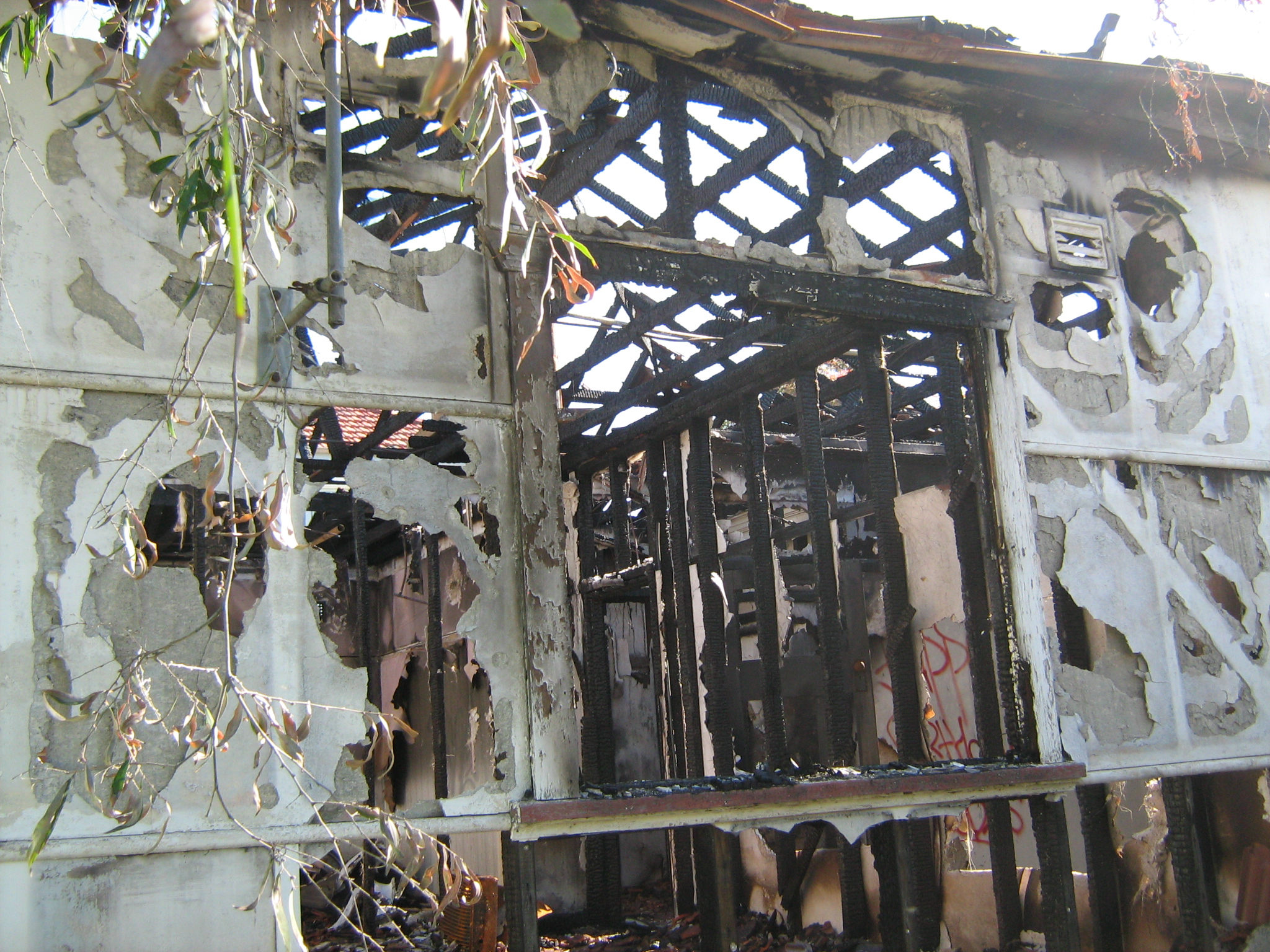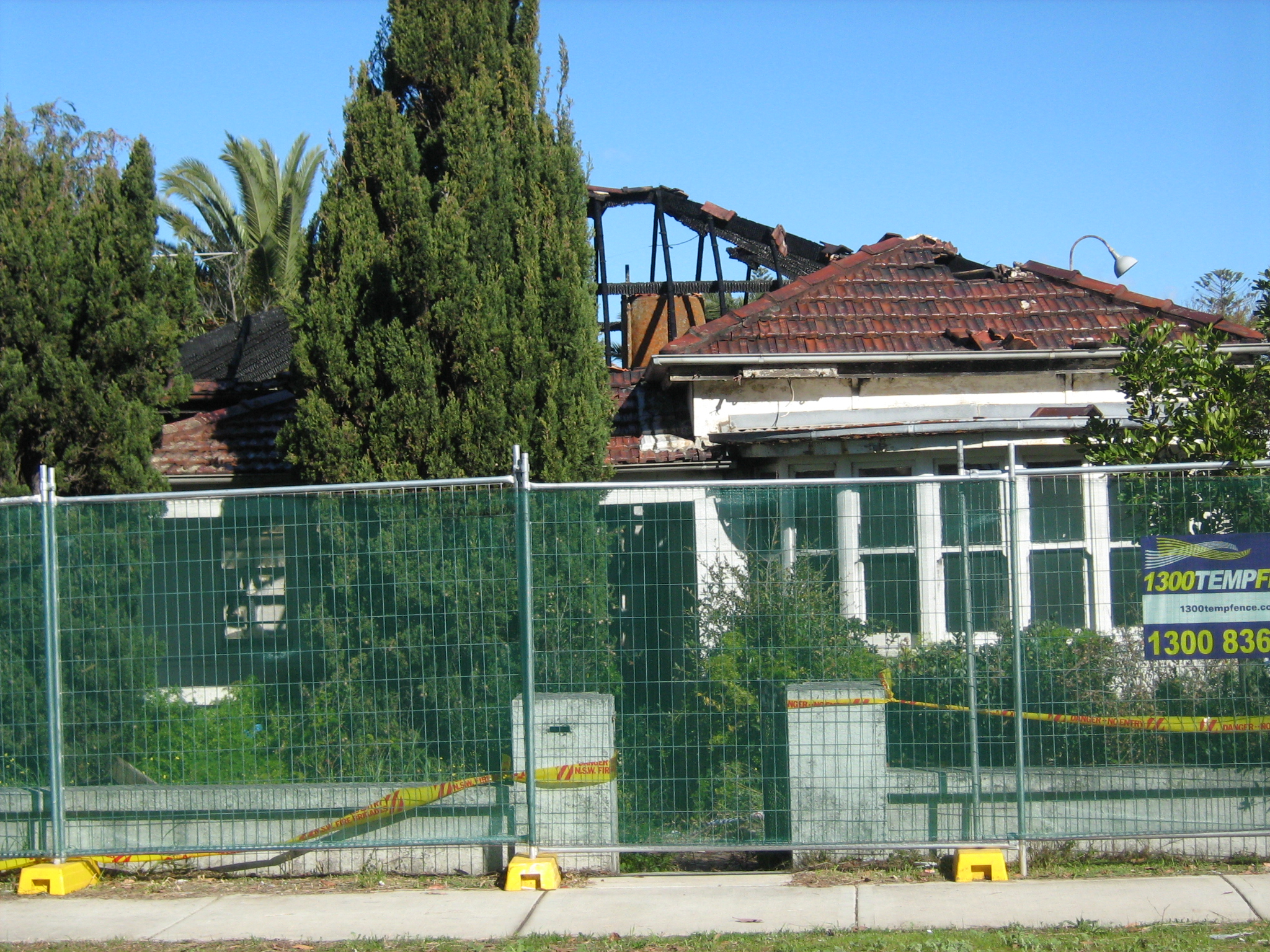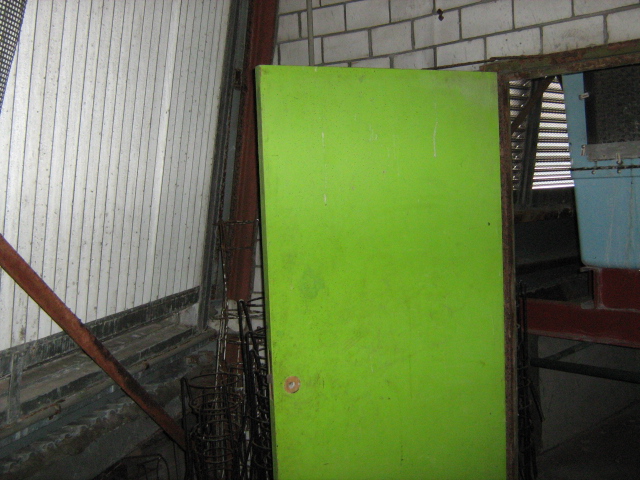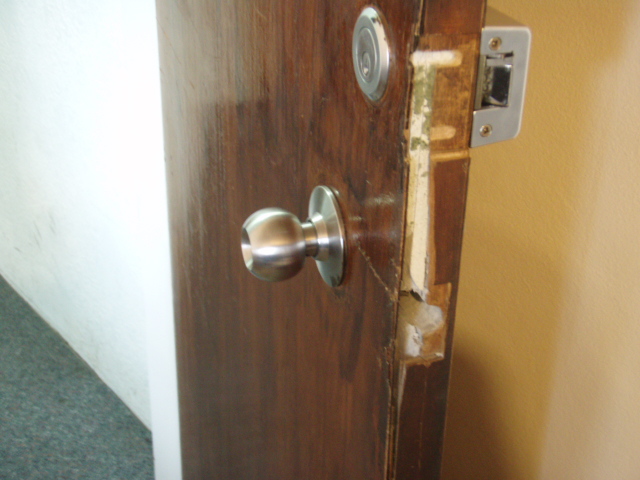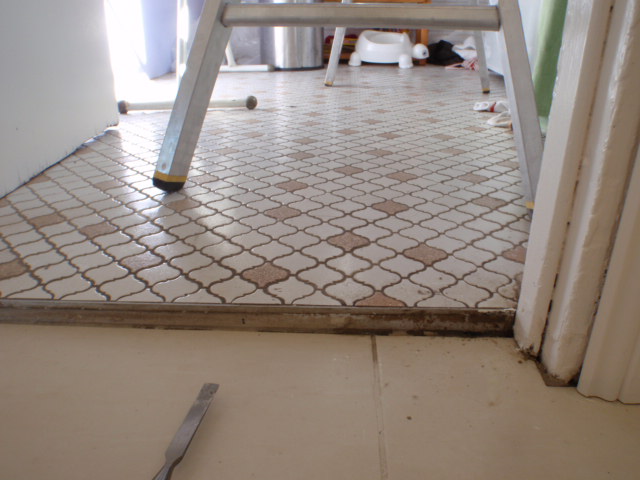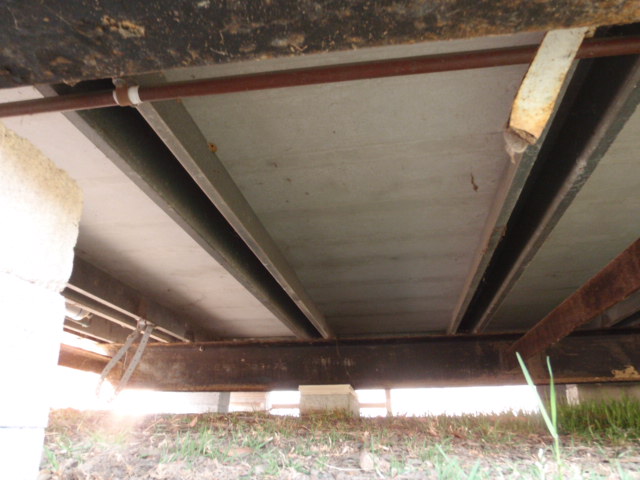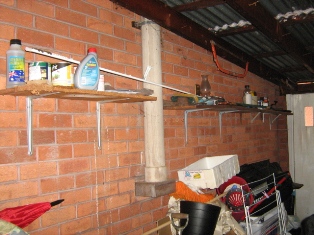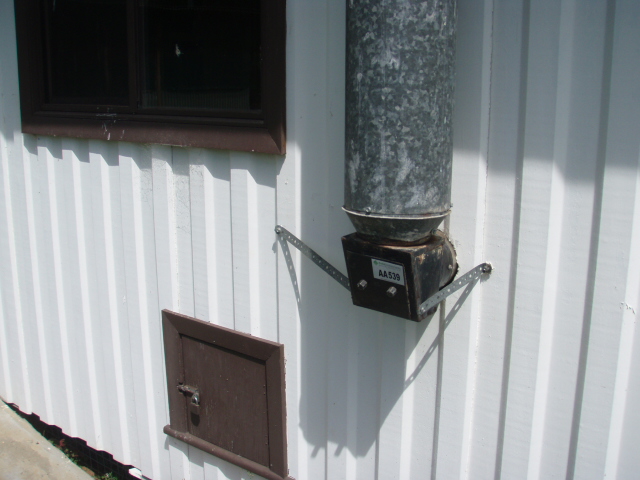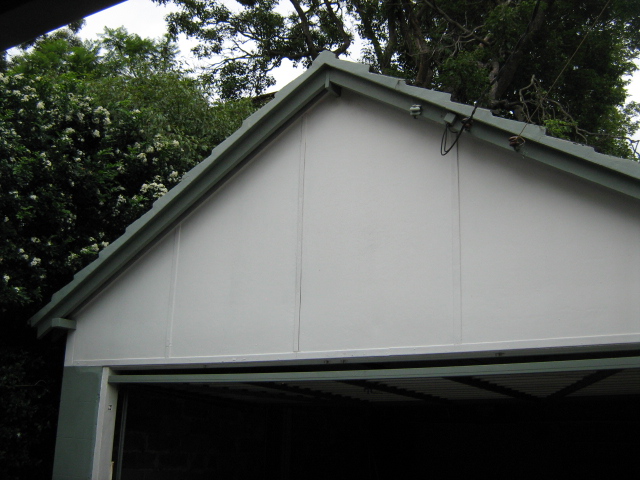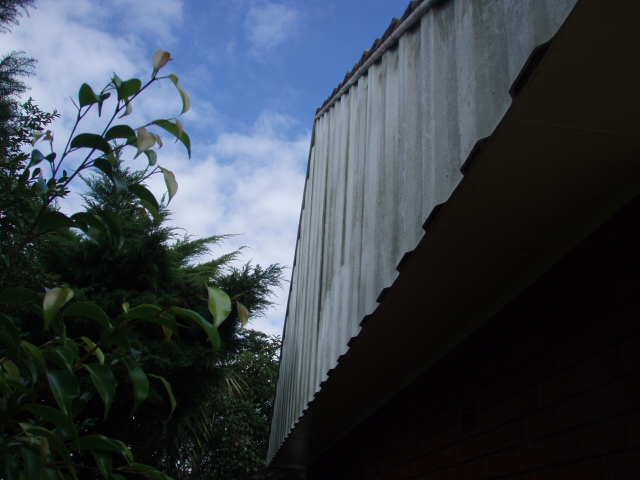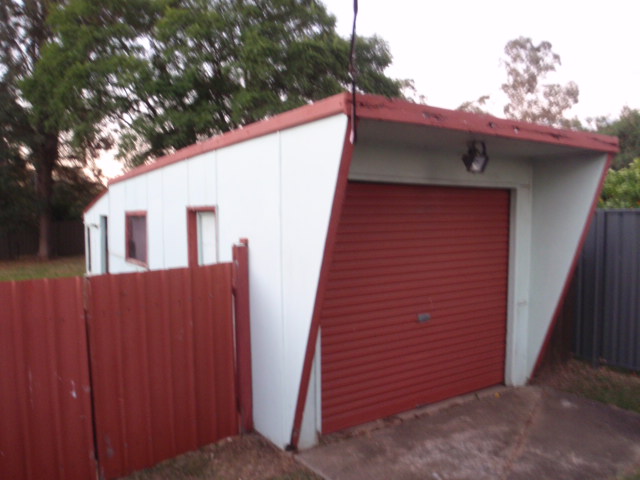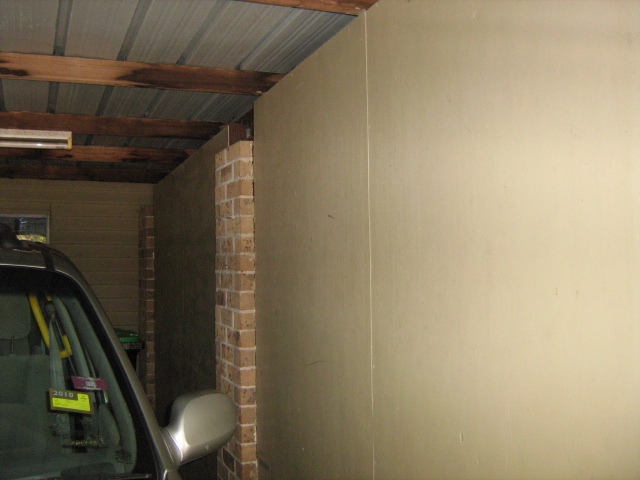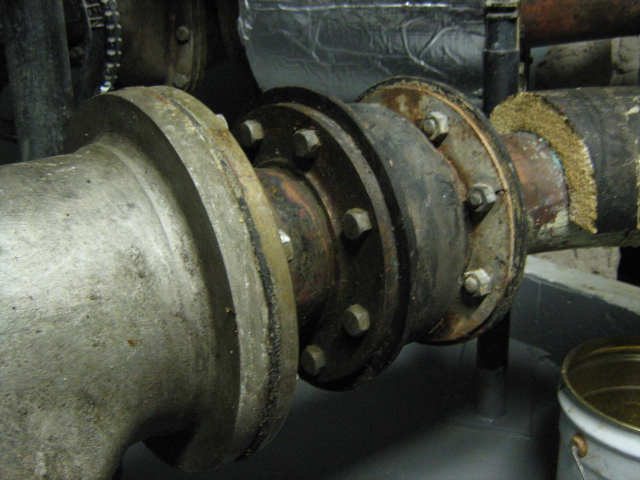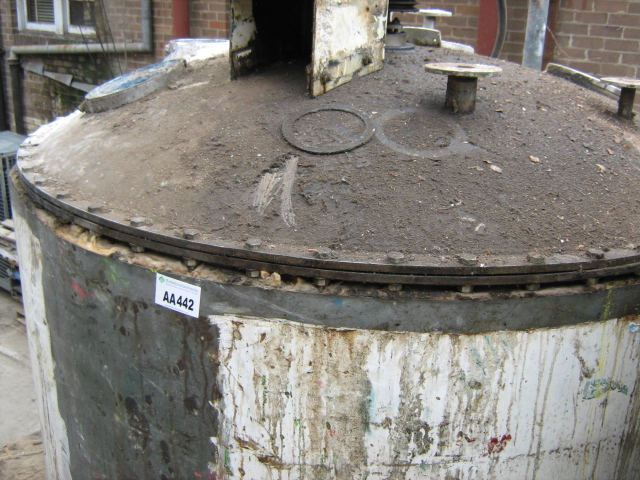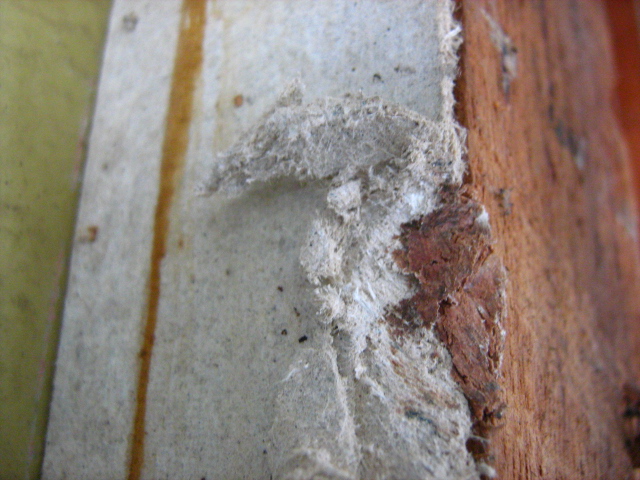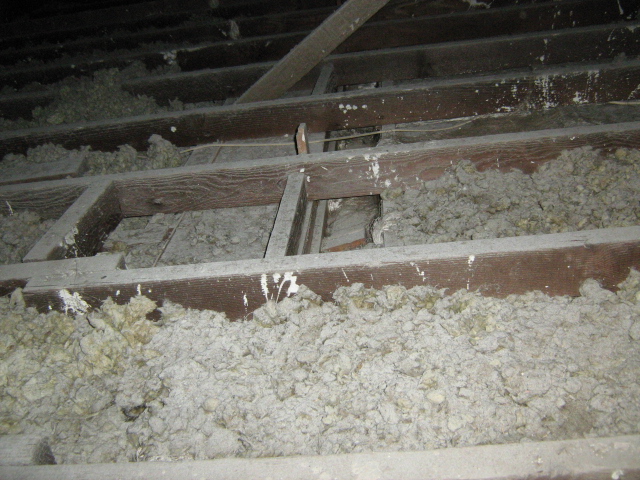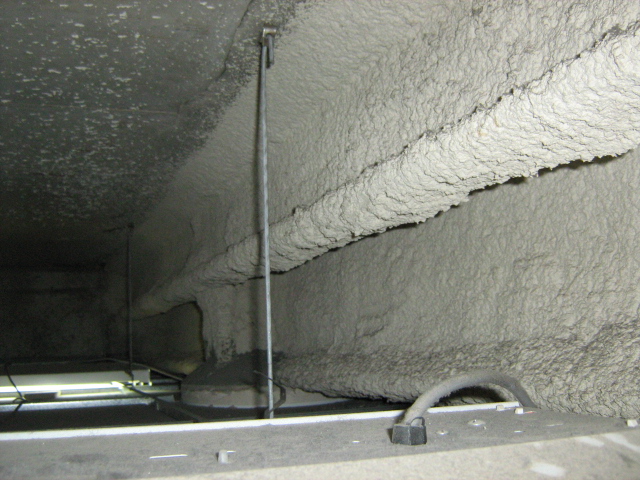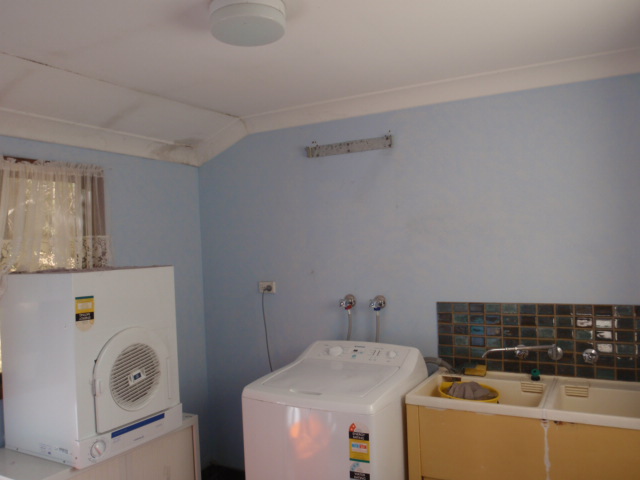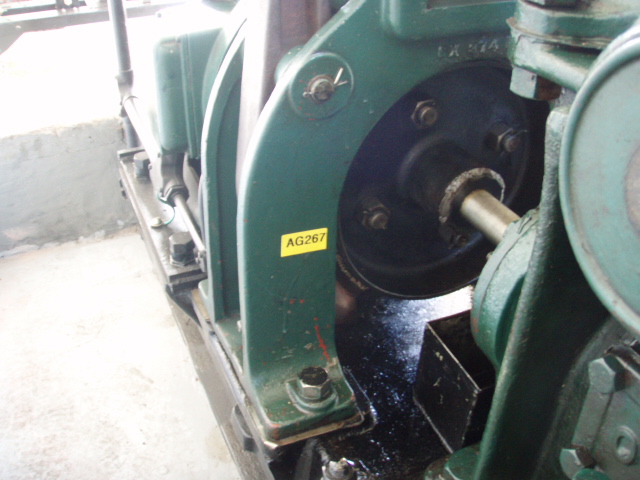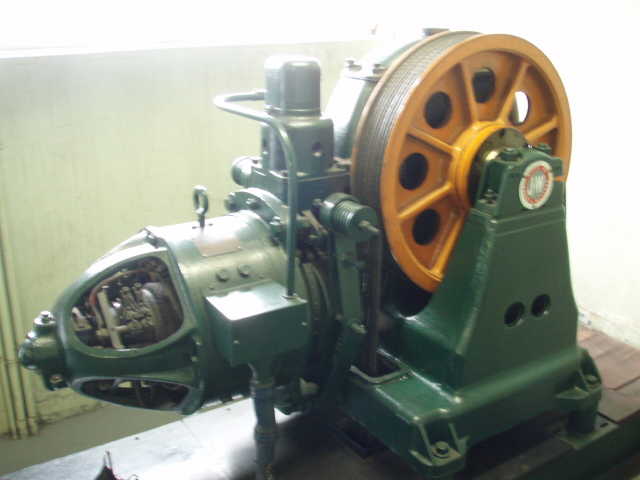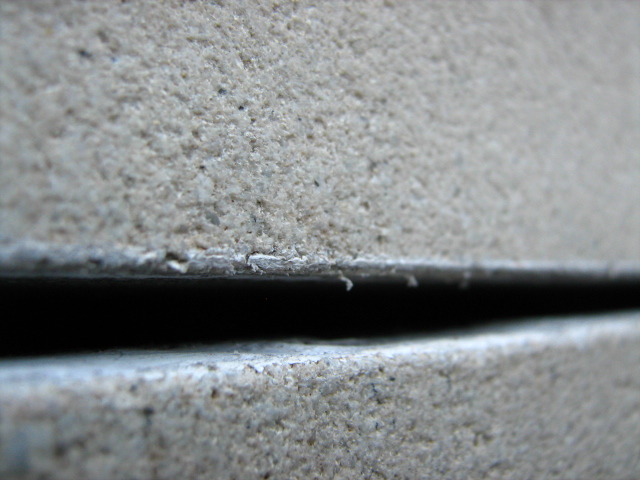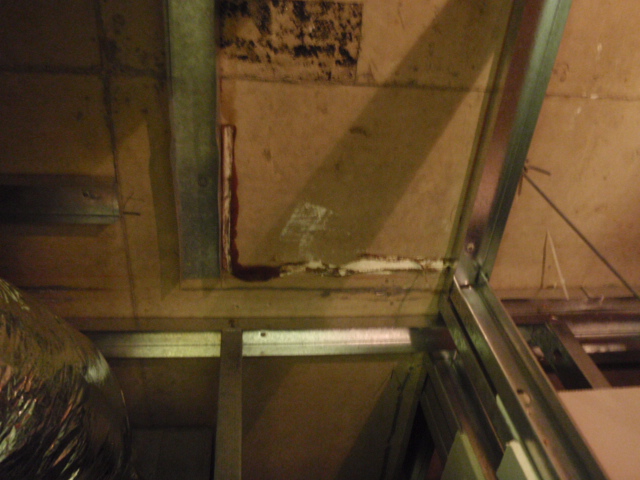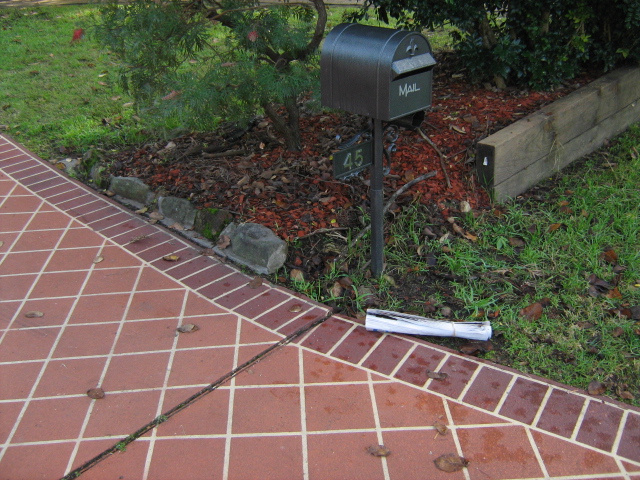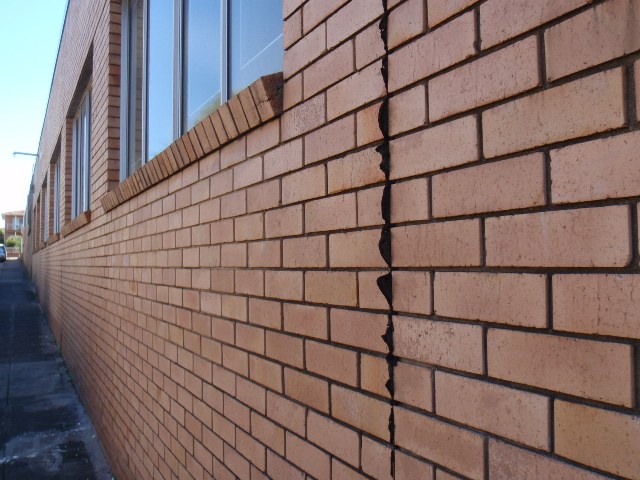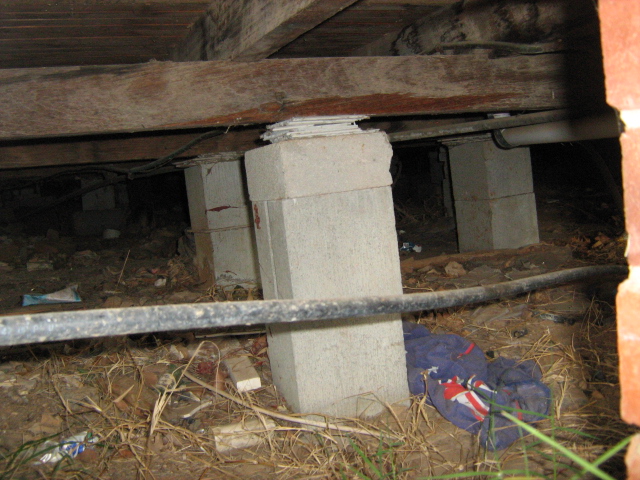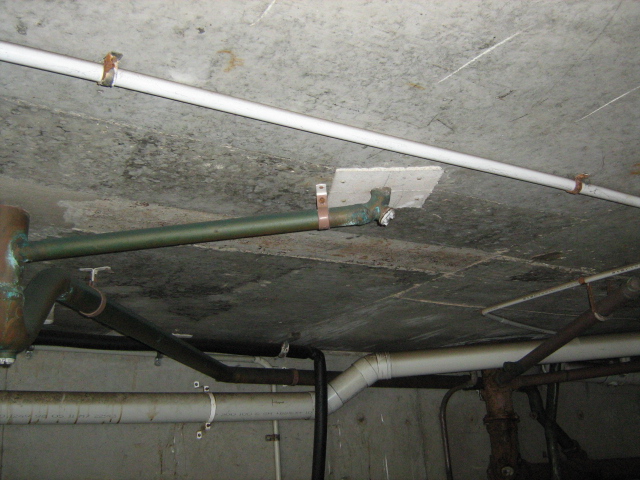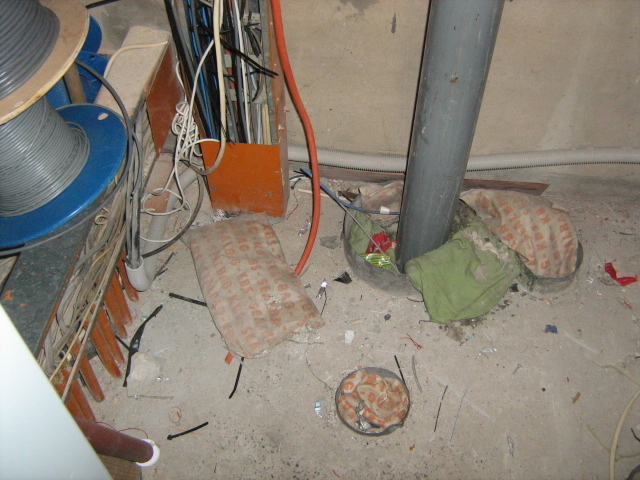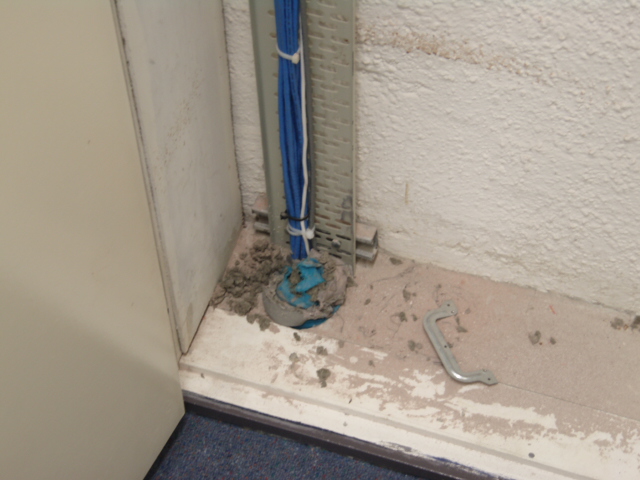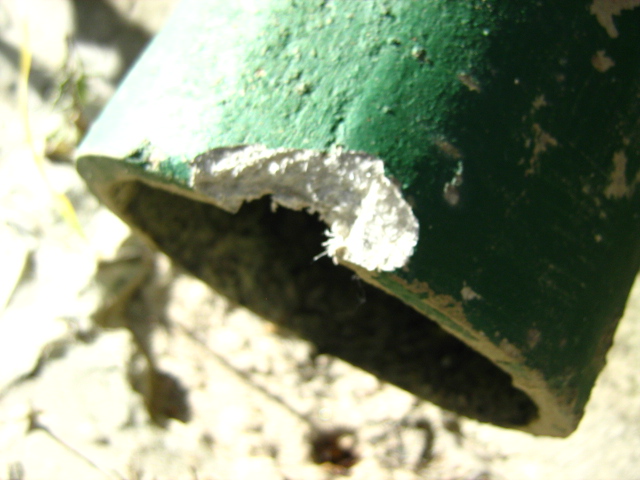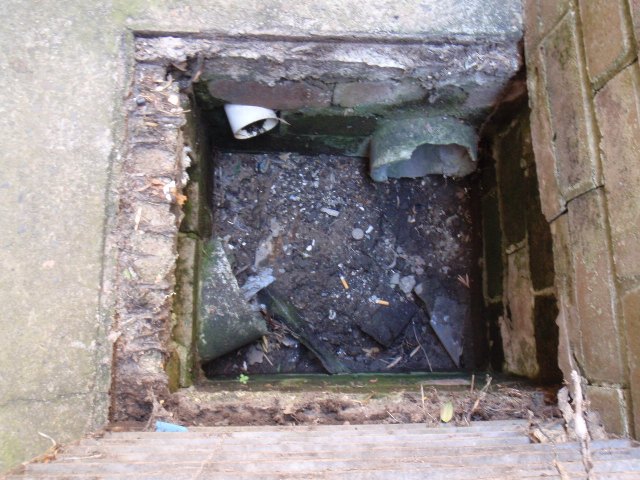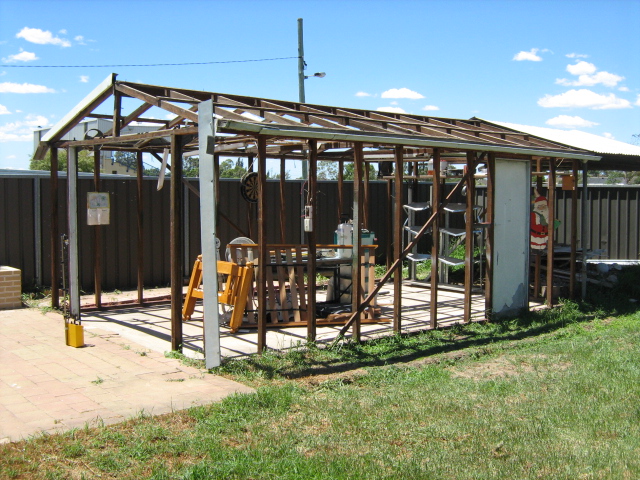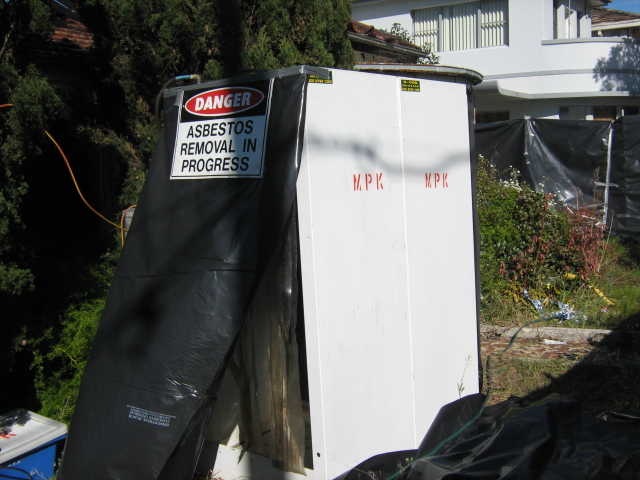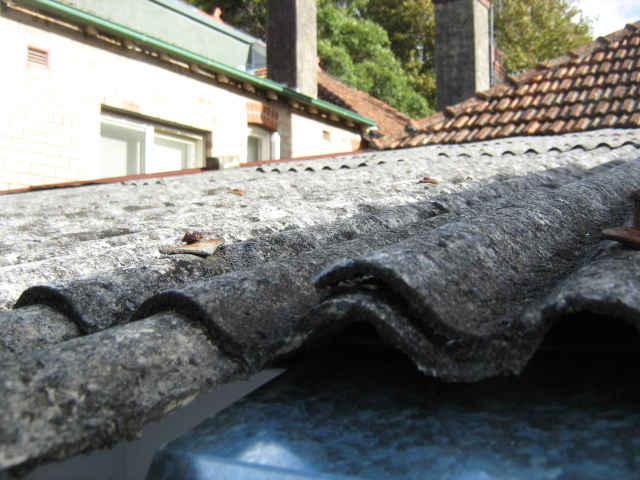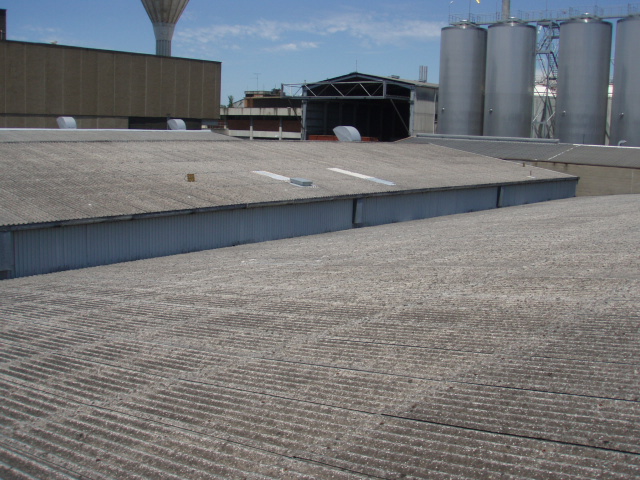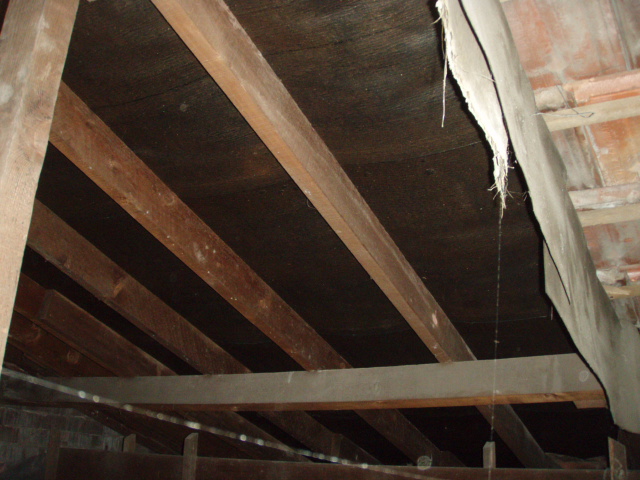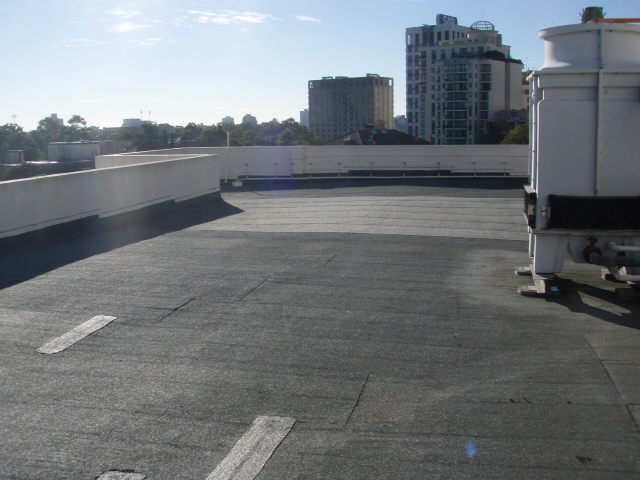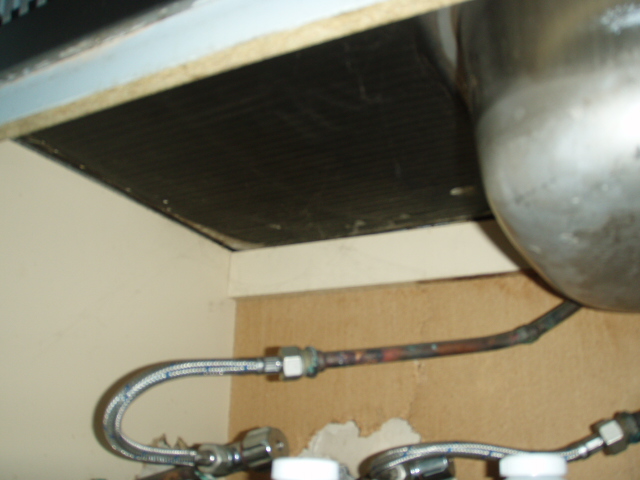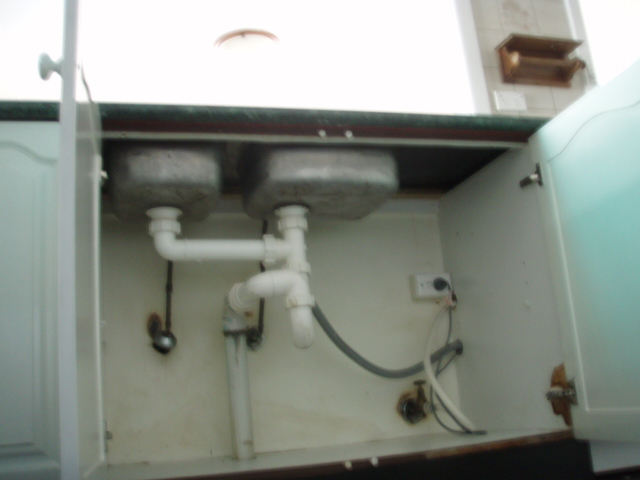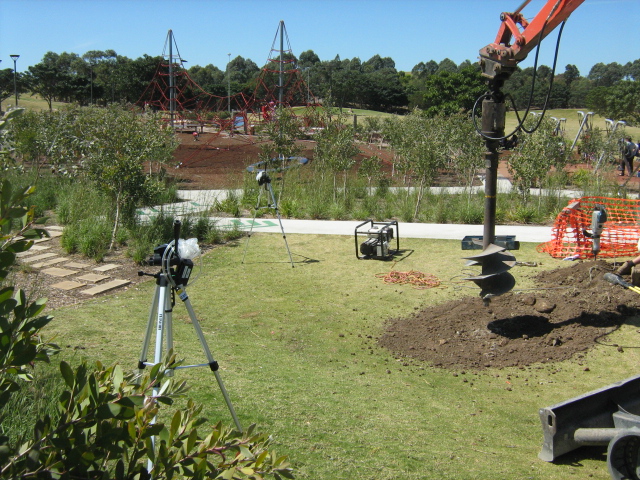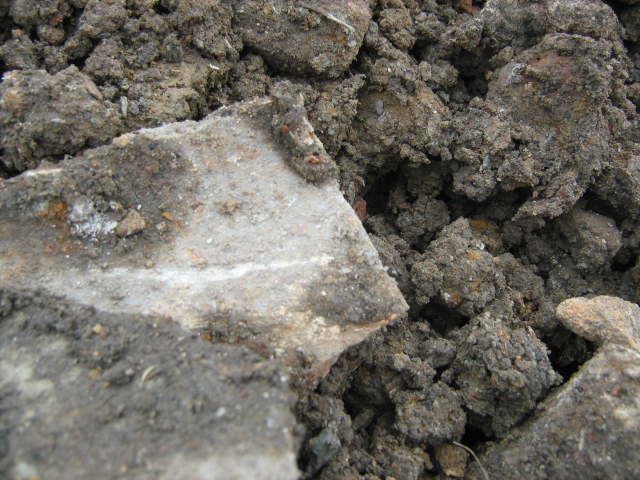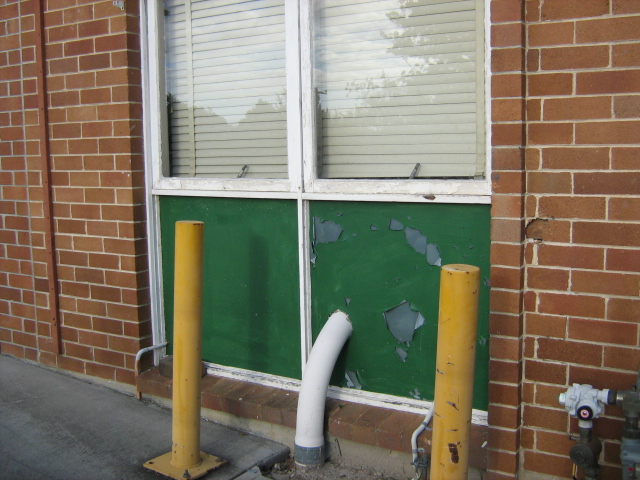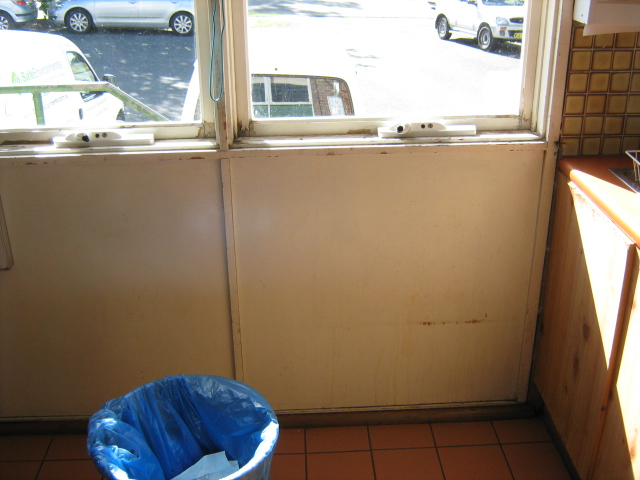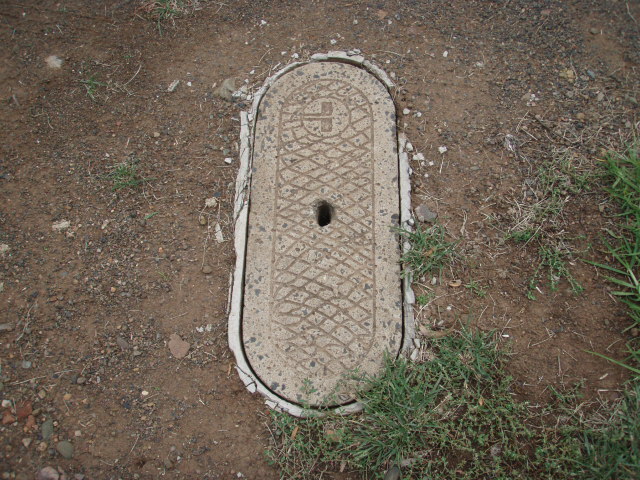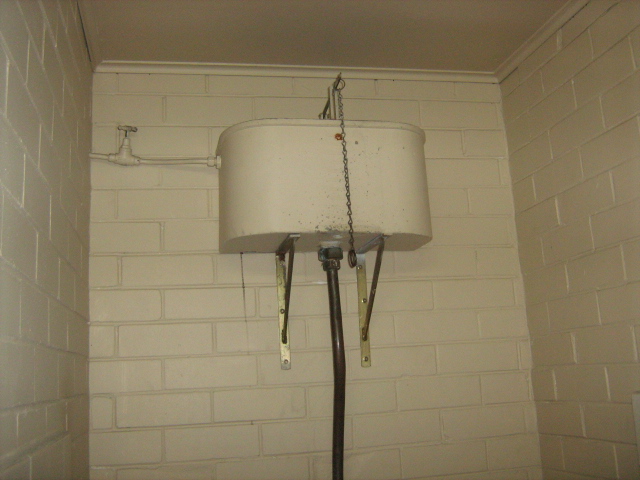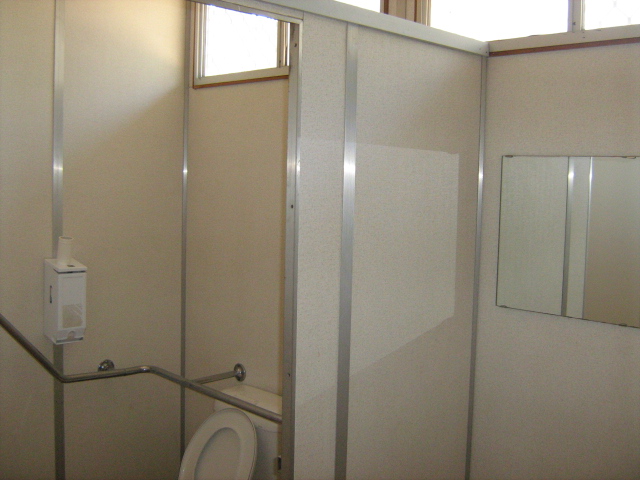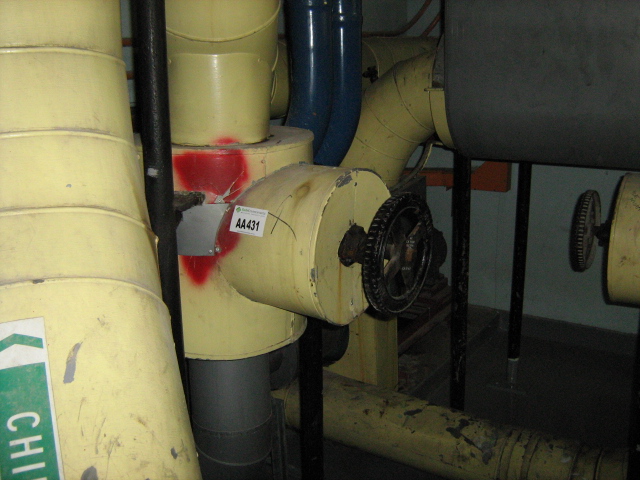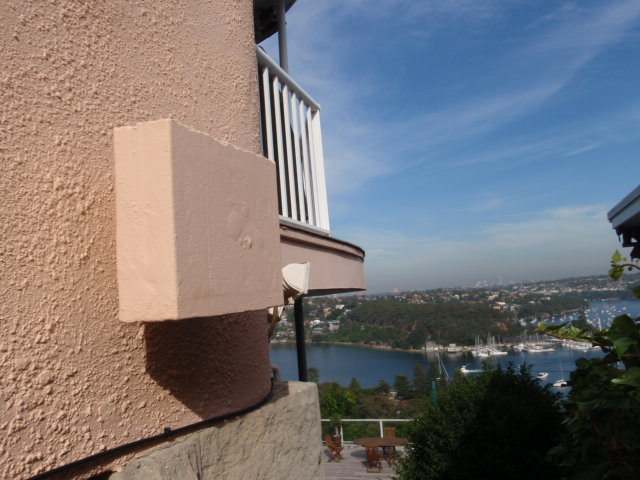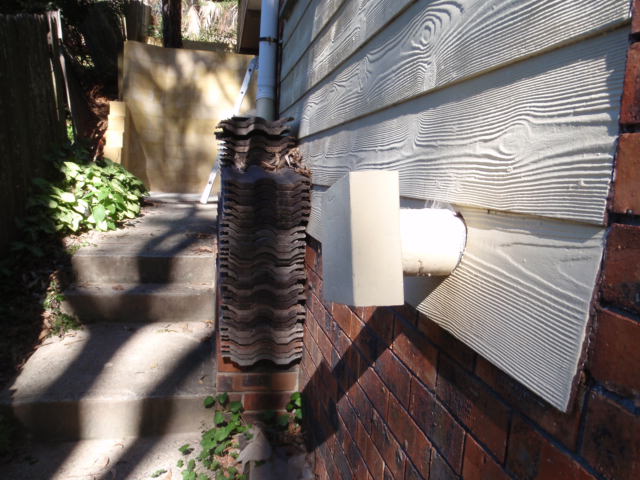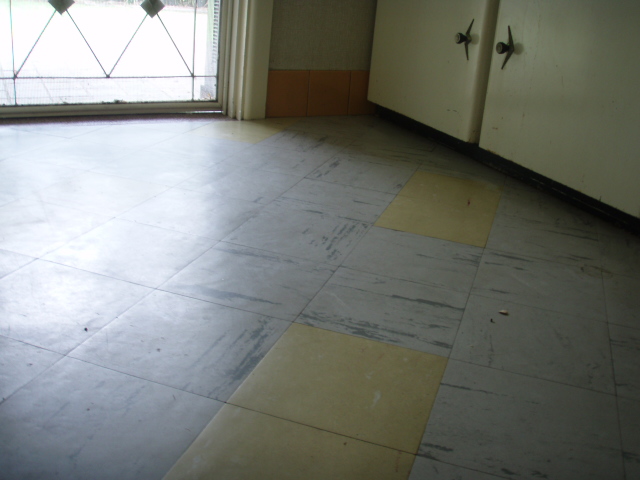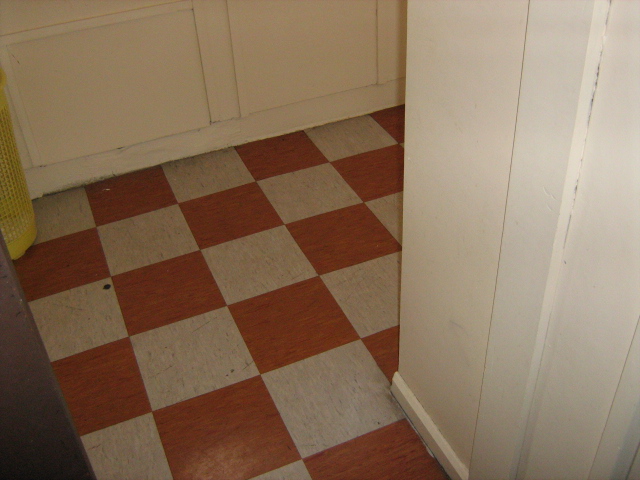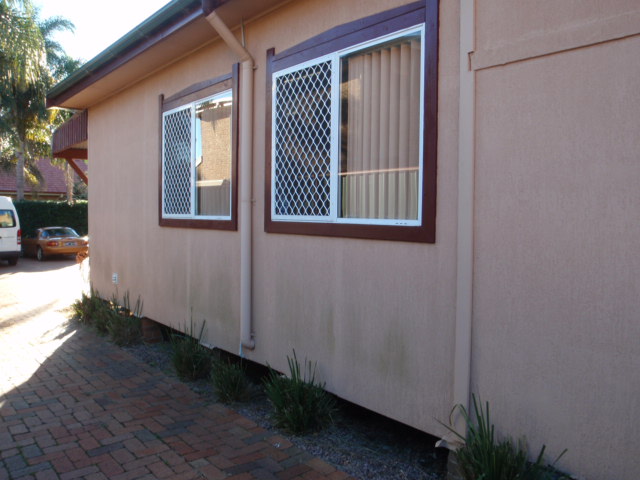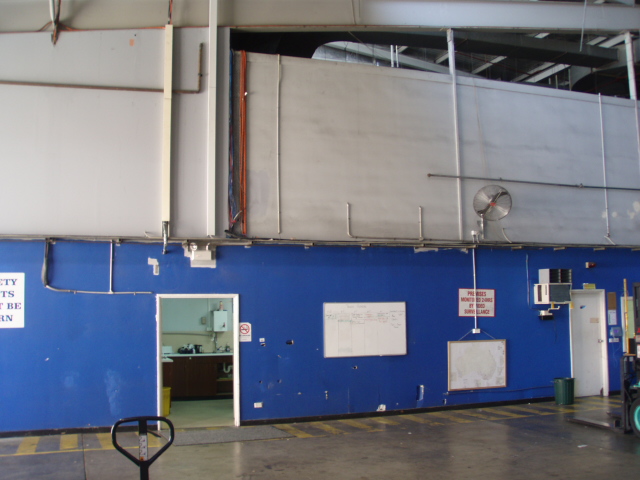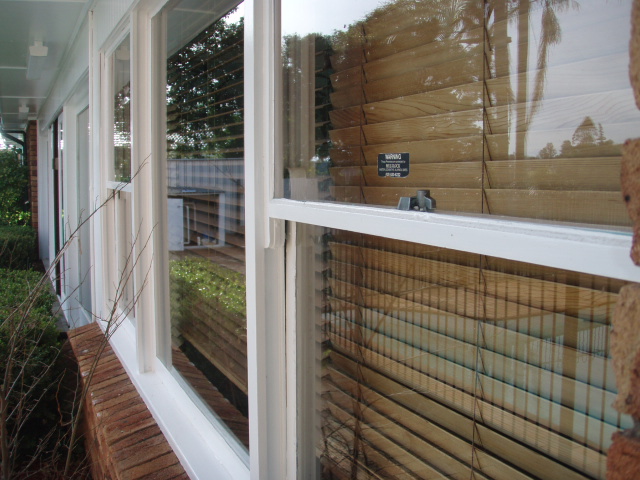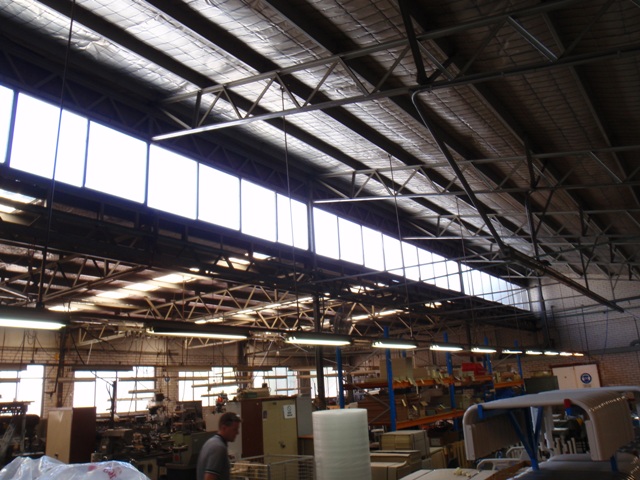Pictures of Asbestos Containing Material
The following asbestos pictures are those where an asbestos consultant is likely to identify suspected asbestos containing materials and is general in nature. This is by no means a definitive list of products as there are over 3,000 products that asbestos was used.
The only way to determine if asbestos is present is to have an asbestos consultant to inspect and collect a sample for asbestos testing.
Please contact Safe Environments for a NATA accredited asbestos inspection located in Sydney.
Air Conditioning
Asbestos can be located within the duct work of Air Conditioning re-heating units. This is more specifically located around heating elements.
The first picture identifies the control box where the re-heating elements can be located. The second picture shows the asbestos millboard lining which surrounds the air conditioning re-heating elements.
Carpet Underlay
Asbestos was carried in hessian bags from Wittenoon in Western AUstralia which was then subsequently used in some carpet underlay. Also asbestos was used in the adhesive to glue down the carpet underlay which is usually a black bitumous material.
The first picture of is asbestos carpet underlay and the second picture is of the black adhesive or glue underneath the carpet that may contain asbestos.
Ceilings
Asbestos ceilings can be found in many forms which include asbestos fibre cement sheet (fibro), vermiculite spray applied ceilings. The vermiculate look like popcorn and many of you might remember your old high school science lab with this material. Asbestos ceiling tiles are also comonly used.
The first picture is of an asbestos fibro ceiling and the second picture is of the vermiculate popcorn ceiling.
Cloth
Cloth linings can be found around material that may require thermal insulation such as a fire cabinet in teh first picture and around flues as found in teh second picture. Fire blankets can also be made of asbestos.
Closets
Closets may be lined with asbestos to increase the fire resistance. This may be in the form of mainly fibre cement sheeting (fibro), softer insulation board and sometimes millboard to ceiling linings.
Cowls
Absestos cowls to flue pipes may contain asbestos cement.
Ductwork
Metal ductwork as well as containing millboard to the reheating elements may contain asbestos to the gasket material lining the flange joints to provide an airtight seal. The asbestso was introduced to hinder the spread of flame within ductwork. The first picture is of air conditioning ductwork and the second picture is of cooling tower ductwork, where the asbestos is located within the flange joints.
Eaves
The majority of eaves to all buildings built before 1990 will have asbestos. This is one of the most commonly tested material for asbestos. The picture below show typical asbestos eaves which are made of asbestos fibre cement sheeting otherwise known as fibro.
Electrical Backing Boards
these are also commonly found asbestos containing materials which are of a resin or bitumous type material. One distinct sign (by no means definitve) is a strong smell of bitumen or tar, the smell of newly made road. While these are fairly stable composite materials, there is usually asbestos dust within the fuse box due to electricians drilling holes into the board.
The first picture in Sydney not only shows the asbesots resin backing board (also known as zelemite) but you can see fibre cement sheet behind the black asbestos resin board. The second picture highlights the potential of asbestos dust to be present within these fuse boxes.
Fibre Cement Sheet
Fibre cement sheet is the most prominant and common form of asbestos that people recognise as being potentially hazardous. True fibre cement sheet is a very hard material. Caution should be applied in determining whether the sheet material is cement or insulating board. insulating board is a softer material and releases fibres much more readily than the stronger cement counterpart. An good indication of true asbestos cement is a golf ball or dimpled pattern on the back of the sheet. Asbestos insulating board will generally have a smoother finish to the back.
The first picture from Melbourne below is of an external wall made of fibro and the second picture is of ceiling and wall lining which are most common in internal wet areas.
Fire Damage
Asbestos fire damage is caused as a result of exposure to temperatures of about 1000 ºC where the effects of charring, spalling, loss of structural strength, etc to the asbestos materials is observed.
The major issue with Asbestos Fires is the debris left behind which can be very fine pieces and/or bundles of asbestos fibres which can be spread to a large area as a result of Spalling. Asbestos contamination can be found within ash and dust after and during an asbestos fire.
Picure 1 is of a house with asbestos fire damage (see parts of roof missing) and the second picture is of the fibre cement sheet which has spalled.
Fire doors
Fire doors can comprise friabel asbestos core materal within the door which can be released into the air when fixing door handles, locks and hinges. When observde from the top of most firedoors the core is visable, being a white millboard material. Other firedoors can have firbe cement sheet lining the inside of the fire door.
The first picture in NSW is of a firedoor in a plant room to a commercial sky scraper and the second picture os of a door to a block of residential units.
Floors
There are many different types of flooring material that contain asbestos. The most common are fibre cement sheet and vinyl shete or tiles. in Many cases the floor may be hidden by carpet and and tiles. A pre demolition survey is required to identify these materials within the house.
The first picture is of 20 mm thick firbre cement sheet under the tiles which can be seen just under the water stop. The second picture is of asbestos sheeting underneath a demountable building.
Flues
Flue pipes which exhaust hot air from boilers and heater may contain gaskets and pipes containing both stable bonded asbestos such as cement pipes or friable rope gaskets to flange joints and plates. The first picture is a asbestos rope gasket around the pipe joints and the second being asbestos cement pipe in a garage.
Gables
The pitched side of roofs otherwise known as gables can contain corrugated moulded asbestos products (picture 1) and flat asbestos cement sheet as shown from a garage in picture 2.
Garages
External garages can contain asbestos cement walls, eaves and corrugated asbestos roofs. Newer garages that are part of the house can have asbestos sheet or fibro to assist in hindering the spread of fire if a fire were to start in the garage.
Gaskets
Asbestos gaskests are used in applications such as hot water pipes, exhausts and boilers. Gasket material is generally friable.
The first picture is of the flange joint gasket to a water pipe in Melbourne. the second asbestos picture is of rope gasket around the tope edge of the boiler in Sydney.
Insulating board
Insualting board is considered to be friable as the material can liberate asbestos fibres into the air much more easy than asbestos cement. In many cases most asbestos consultants will assess insulating board as a cement product, however asbestos insulating board is a much lower density than cement. Ensure that your asbestos inspector is NATA accredited or a certified occupational hygienist.
The first picture is of asbestos insulating board, note the low density of the material.
Insulation
Asbestos insulation was used in ceiling and roof cavities, with hundreds of homes in theACT and canberra with this issue (picture 1). Limpet spray applied thermal insulation was used to fire proof structural beams to buildings (picture 2). Thjis material is friable and an extremely high risk of exposure if disturbed.
Laundries
Laundries are one of the wet areas that comonly have asbestos cement sheet and asbestos insulating board lining to walls and ceilings. Vinyl tiles and cement sheets to the floors were also used. due to water and electricity in close proximity, asbestos lined finishes will assist to reduce the spread of flame.
Lift Brakes
The brakes to lifts will generally contain asbestos to assist in reducing heat and thereby brake fade. Most brakes produced up until about 2004 contained asbestos.
The pictures of the lift wheels do not clearly show the asbestos brake pads, however the clamp down on the wheel when the lift stops at each level.
Mastic
Asbestos mastic sealants are used for a wide variety of purposes from joining flange joints to ductwork to pointing material to stone and bricks, and movement joints. The likliehood of the mastic containing asbestos is increased with areas that may be subjected to fire or that may assist the structural integrity during a fire.
Movement Joints
Movement joints to buildings can contain asbestos. These may be vertical movement joints or between concrete floor slabes. The asbestos being in a composite form is generally stable unless they have become brittle through heat. The movement joints may be generally a asbestos flexable sealant type material or a bitumous asbestos material.
Packing Material
Asbestos fibre cement sheet and asbestos insualting board was used to pack and jack things to the right hight or place. Packing suppoarts were widely used under pylones to house supports and used in random places such as around the pipe shows in picture 2 and in brickwork. Asbestos packing material has been found on door frames, there seems to be no limit to where asbestos sheet was used.
Penetration Packing Pillows
These materials have loose friable asbestos within fabric used to pack penetrations through walls and ceiling around cables and pipes. This is to maintain the fire resistance of walls where services are required.
Pipes
Asbestos pipes may include downpipes, asbestos cement water pipes underground, asbestos cement flues for transporting hot air from boilers. they are generally made of asbestos cement, providing a hard wearing product.
The first picture shows an asbestos downpipe from a gutter with some fibres from the breakage in Melbourne, Victoria. The second picture is of a storm water pipes underground.
Removal
Ensure that if you have asbestos removed that a licensed asbestos removalist is engaged and an occupational hygienist provide asbestos air monitoring and asbestos clearance inspections.
Roofs
Asbestos roofs are generally made of a corrugated moulded product that is generally fiarly stable material. Being a brittle roof there are other significant issues which include teh potential of falling through by walking on them.
Roof Membranes
Roof membranes ar egenerally a bitumous material. They can reside at the tope of the roof or underneath roof tiles in a sheet material. Tehy are usually a black colour andthe asbestos fibres can generally be seen with the naked eye.
Sink Sound Dampener
Many people are unaware that asbestos can reisde even under the kitchen sink. The square pad under the sink or bitumous spray applied coating may be made of asbestos.
Soil
Asbestos soil can be found due to old buildings and materials that have cointaminted the soil. The level of risk is dependent on the type of asbestos contamination. Asbestos cement is generally bonded and maintains structural integrity compared to asbestso lagging materials that may disperse individual fibres into the air at high concentrations. OUr asbestos in soil investigations are conducted in accordance with the Western Australian
Spandrel Panels
Spandrel panels are the panels that are found below the windows to buildings. Asbestos spandrel panels can be of fibre cement sheet, 20 mm asbestos cement sheet or asbestos insulating board that is sandwiched between metal panels.
Telephone Pits
Most of the old telephone pits contain asbestos as a bonded moulded product and can be seen in most streets in Australia.
Toilet Cisterns & Cubicle Partitions
Toilet cisterns can comprise asbestos moulded products either above the toilet or behind walls in cavities whilst toilet cuble partitions can commonly comprise 20 mm thick compressed asbestos cement sheet.
Valves
Friable asbestos can be found within the insulation to valves to hot water pipes and gaskets to flanges of valves and pipes.
Ventilation Ducts
Asbestos cement ventilation ducts are common on older buildings with basements, laundries and cellars below ground to increase the ventilation. These unsuspecting items may contain asbestos.
Vinyl Tiles
Asbestos vinyl tiles commonly contain asbestos. The asbestos tiles are nominally 9 inches square. Vinyl sheet can also contain asbestos as well as the bitmous adhesive used to glue the asbestos vinyl sheet and asbesots vinyl tiles down.
Walls
Absestos cement sheet and asbestos insulating board are used throughout buildings to increase the fire rating to hinder the spread of fire.
Window Putty
Window putty can contain asbestos of different types which may include a stable composite putty within old timber window frames (Picture 1) or rope type friable window gaskets to georgian wire frame windows (Picture 2). The use of asbestos within the putty assists the fire resistance, increasing the structural integrity of the window during a fire.
Be absolutely assured. Safe Environments is NATA accredited for asbestos Inspections and preparing asbestos management plans.
